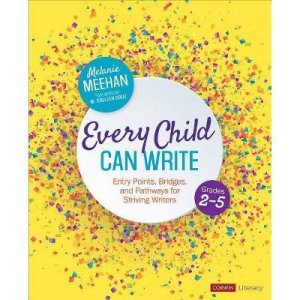Wet Paint
Writing prompts to incite sparks to start a writer’s engine is a challenging teacher’s task. Too narrow of a prompt, and the engine remains cold. Too broad of a prompt…and the engine remains cold.
Recently, I needed a prompt to transition students from writing a personal memoir to writing narrative nonfiction (aka creative nonfiction). In an effort to be clear, I kept the prompt lean: Write a true story as story.
Turns out, clarity is contextual. The same prompt can be a springboard for some and an abyss for others. Part of our work is to meet students where they are–adjust the task, the prompt, the context to fit the need.
In my case, mentor texts and discussion clarified the prompt for some. However, narrative nonfiction isn’t fiction conjured up inside our heads. It turns out, tapping into lived experiences or research is only a piece of the process. Yes, we can list and accumulate pieces in our writer’s notebooks; however, converting those experiential fragments or bits of research into a story is challenging!
Neither my prompt, class discussion nor mentor texts fed into one student’s particular strengths as a writer. Conferring with Jane (pseudonym), she opened her draft and shared that she gathered a lot of information about Mary Shelly, but she did not know how to convert the information into a story.
In other words, Jane took steps forward under the guidance of the prompt and by reading a couple of books about Mary Shelley, but she still could not convert all of the amassed information into a story, and then THIS happened:
In the middle of conferring, Jane asked, “I made an OC this weekend. Want to see it?”

“Whats an O.C.?”
“An original character.”
Jane retrieved her private journal–filled with sketches–and explained the O.C., named Autumn. Jane knew a lot about Autumn’s “story” just from a sketch. She has yet to write any words about Autumn.
This moment sparked me to make the decision to revise the prompt for Jane. Until now, I had been trying to adjust Jane’s thinking to work within my prompt, the class discussion, the mentor texts, rather than adjust the prompt so that it worked for her thinking. So, I asked Jane if I could revise the prompt right inside her Google Doc:
What makes Mary Shelley a likable person? What does she do that makes us want to keep watching her, listening to her? Could you bring that to life in a sketch? Could you sketch a scene with Mary in it (and then write it as a story).
Jane read as I typed and she nodded with enthusiasm.
“I can do that.”
 After ten minutes, I circled back to Jane.
After ten minutes, I circled back to Jane.
“I drew Mary tough–in boys’ clothes. She’s really tough and has to be to stand up for women’s rights.”
“Could you write a scene? A moment that brings this sketch to life too?”
“I can do that.”
I hadn’t explicitly thought of prompts as fluid or permutable. So often, prompts in education feel fixed and I wonder how much I have contributed to that feeling in my classes. At the very least, today, I am grateful that my mentors (in person and in text) have given me the guidance and confidence to learn to be responsive to the writer while the paint is still wet. And maybe that is the best way, for me, to think of writing prompts–wet paint as opposed to chiseled stone.






